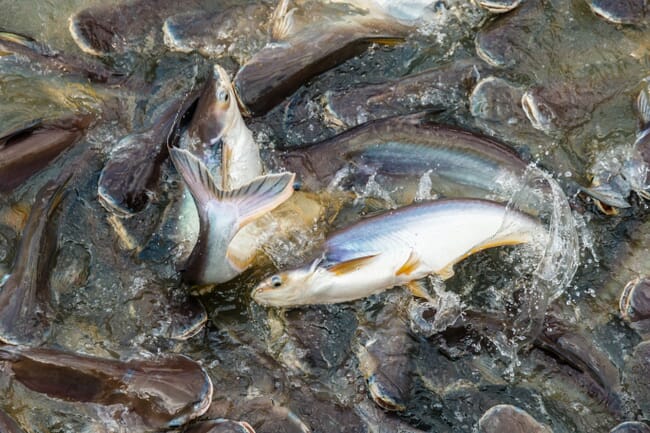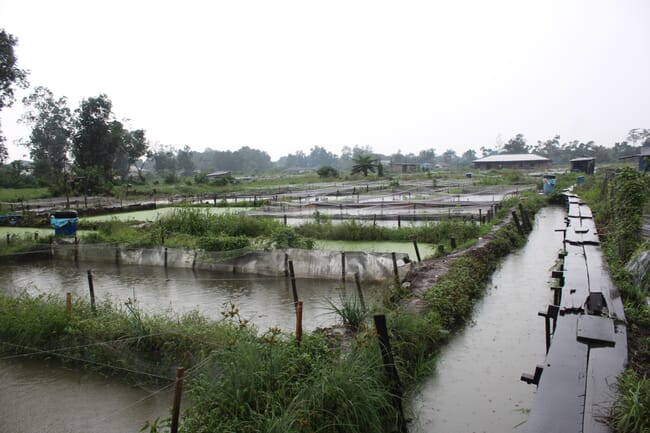The study, published in Aquaculture Reports, indicates that stricter biosecurity measures during grow-out could reduce the prevalence of foodborne zoonotic trematode infections in catfish.
The study compared the instances of trematode infections between three intensive catfish farms near Ho Chi Minh city during both the rainy and dry seasons. The researchers observed spikes in infections during the rainy season, despite low overall infection number across the three farms. This suggests that existing management techniques can lower the risk of parasite infection.

Despite the low infection rate, the research team noted that the farm environments were susceptible to contamination from outside sources. In some instances, fishponds could be exposed to contaminated run-off or animals that carried trematode eggs and larvae. This suggests improved biosecurity protocols that prevented this type of exposure could bring trematode infections closer to zero.
Background
Catfish are the cornerstone of Vietnam’s aquaculture output and play a crucial role in the country’s domestic and export economy. Despite this strong position, the industry faces significant production challenges – especially from parasitic infections.
Southeast Asia has an ongoing issue with foodborne zoonotic trematodes (FZT), a group of parasitic flatworms that can infect humans if they ingest food contaminated with the parasite’s larvae or eggs. The WHO estimates that 18 million people in Asia are currently infected with an FZT. Though catfish producers in Vietnam do their best to keep the parasites at bay, the risk of contracting FZT from wild and farmed catfish remains high.
The most common FZT species seen in Vietnam’s catfish are heterophyids like Haplorchis pumilio, H taichui, and Centrocestus formosanus. To keep the parasitic flatworms or “flukes” at bay, producers often try to eliminate aquatic snails from catfish ponds. Since the flukes rely on aquatic snails as intermediate hosts, removing the snails means the flukes won’t be able to infect the fish or persist in humans.
The study
The researchers identified three intensive catfish grow-out farms in the suburban districts of Ho Chi Minh city. One location specialised in hybrid catfish (Clarias sp), the second farm raised river catfish (Pangasianodon hypopththalmus) and the third farm cultured black-spotted catfish (Pangasius larnaudii).

To test the rate and prevalence of FZT infections, the researchers had the farms drain, lime and dry their ponds before growing out a new batch of fingerlings. This disinfected the pond and killed any trash fish or snails in the surrounding environment. This process was repeated in both the rainy and dry seasons before grow-out. At various sampling intervals, 10 fish were randomly selected and tested for fluke infections.
Initial results
During data analysis, the researchers tracked the prevalence of fluke infections across the three species of catfish and compared infection rates between the rainy and dry seasons.
Only one type of FZT, H pumilio, was recorded in the catfish. Farm prevalence was highest for black-spotted catfish (20 percent), followed by hybrid catfish (16.7 percent). The lowest FZT prevalence was seen in river catfish (5 percent).
Of the 550 fish sampled each season, FZT infections across all the farms was low during the dry months (0.2 percent). However, infection numbers increased during the rainy season (1.5 percent), suggesting a link between overall climate and FZT prevalence.
The importance of biosecurity
When comparing FZT prevalence between farmed and wild catfish from the Mekong Delta, the researchers noted a lower prevalence in the farmed fish. This suggests that catfish producers were able to effectively control snail populations in their ponds.
Although the overall prevalence of infection across the farms was low, the outbreaks indicate that additional biosecurity measures should accompany control efforts. Sustained rainfall from May to October created optimal conditions for aquatic snails – the uptick in infections isn’t hugely surprising. However, since all the ponds in the study were drained, limed and dried before being stocked, the outbreaks suggest that pond water was contaminated with surface run-off that contained fluke eggs, starting the infection cycle.
The presence of cats and dogs should also be mentioned. The researchers noted that pets and stray animals often ranged into the pond area over the course of the study. Cats and dogs are susceptible to fluke infections and can shed the parasite in their faeces.
Stronger biosecurity protocols that keep the surrounding environment fluke-free may counteract the seasonal effect of the rainy season. This, along with the ongoing management efforts could keep instances of FZT low, further strengthening Vietnam’s catfish industry.



